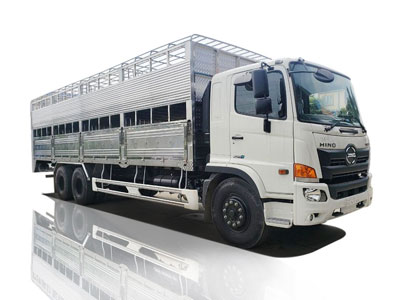Introduction
In today’s world, managing waste responsibly is more crucial than ever. Garbage compactors have emerged as an effective solution for reducing the volume of waste generated, particularly in commercial settings. However, when considering the purchase of a garbage compactor, one of the most important factors to consider is the dimensions. This comprehensive guide will delve into garbage compactor dimensions, helping you understand their importance, how to choose the right size, and what to expect in terms of capacity and space requirements.
What is a Garbage Compactor?
Garbage compactors are machines that take in waste materials and compress them into a more manageable size. They help reduce the volume of garbage, making it easier to handle and dispose of. Compacting waste can lead to decreased collection frequency, lower landfill fees, and a more organized waste management system.
How Do Garbage Compactors Work?
Garbage compactors operate by using a hydraulic ram to compress waste into bales or cubes. The compacting process significantly reduces the size of the waste, which can then be disposed of more efficiently. This process not only saves space in dumpsters but also reduces the overall environmental impact.
Importance of Understanding Garbage Compactor Dimensions
Understanding the dimensions of a garbage compactor is essential for several reasons:
- Space Management: Knowing the dimensions ensures that the compactor will fit in the designated area.
- Capacity Considerations: Size affects how much waste can be processed at one time.
- Operational Efficiency: An appropriately sized compactor can improve waste management efficiency.
Main Dimensions to Consider
1. External Dimensions
External dimensions refer to the overall size of the garbage compactor. It is crucial to measure the physical space where the compactor will be placed, considering factors such as:
- Length: The distance from the front to the back of the compactor.
- Width: The distance from one side of the compactor to the other.
- Height: The measurement from the base to the top of the compactor.
For example, a standard vertical trash compactor might measure 48 inches in height, 30 inches in width, and 36 inches in depth.
2. Internal Dimensions
Internal dimensions gauge the space available for waste. These dimensions affect how much waste can be compacted in one cycle. Typical internal dimensions might include:
- Compaction Chamber Length: The length of the chamber where waste is compressed.
- Compaction Chamber Width: The width of the chamber, which influences how much waste fits at once.
- Compaction Chamber Height: The maximum height of waste that can be compacted.
3. Compaction Ratio
The compaction ratio is a measure of how much the garbage compactor reduces the volume of waste. A typical ratio might range from 3:1 to 10:1, meaning that one cubic yard of waste could be reduced to one-third to one-tenth of its original size.
4. Weight Capacity
Every garbage compactor has a maximum weight it can handle, typically measured in pounds. Understanding the weight capacity is essential to prevent overloading the machine, which could lead to malfunctions. Standard compactors might have a weight capacity ranging from 800 to 4500 pounds.
Choosing the Right Size Garbage Compactor
When selecting a garbage compactor, it’s essential to consider various factors to ensure you choose the appropriate size for your needs.
1. Assess Your Waste Volume
Begin by determining the volume and type of waste generated. This will help you select a compactor with the right capacity. For instance, a small business may generate less waste than a large supermarket.
2. Evaluate Space Availability
Measure the space where the compactor will be located. Ensure to account for clearance requirements, as some models need extra space for loading and unloading.
3. Consider the Waste Types
Different waste types may require different compactor specifications. For example, a restaurant may need a compactor designed for food waste, while an industrial plant may require one to handle metal scraps.
4. Review Local Regulations
Be aware of any local regulations regarding waste management. Some areas have restrictions on the size or type of compactors you can operate.
Popular Garbage Compactor Dimensions
1. Residential Compact Carriers
Residential compactors are designed for home use, typically featuring compact dimensions. Common dimensions are:
| Model | Height | Width | Depth |
|---|---|---|---|
| Model A | 34 inches | 24 inches | 30 inches |
| Model B | 32 inches | 22 inches | 28 inches |
2. Commercial Compact Carriers
Commercial garbage compactors must accommodate larger volumes and heavy waste types. Example dimensions include:
| Model | Height | Width | Depth |
|---|---|---|---|
| Model C | 56 inches | 40 inches | 36 inches |
| Model D | 60 inches | 48 inches | 44 inches |
3. Industrial Compact Carriers
Industrial compactors are designed for maximum capacity and heavy-duty use. Typical dimensions might include:
| Model | Height | Width | Depth |
|---|---|---|---|
| Model E | 78 inches | 60 inches | 54 inches |
| Model F | 84 inches | 72 inches | 66 inches |
Practical Tips for Using a Garbage Compactor
1. Regular Maintenance
Regularly inspect and maintain your garbage compactor to ensure it operates efficiently. This includes cleaning, checking hydraulic fluids, and ensuring that the compacting plates are functioning properly.
2. Educate the Users
Train all personnel on how to use the compactor safely and efficiently. Misuse can lead to breakdowns or safety hazards.
3. Monitor Weight Loads
Keep track of how much waste is being loaded into the compactor. Overloading can cause mechanical failures and reduce the life of the equipment.
4. Know Your Waste
Understand what types of waste can be compacted. Some materials like batteries and electronics might require special handling.
Environmental Impact of Garbage Compactors
Garbage compactors play a significant role in waste management efforts aimed at reducing landfill waste. By compressing garbage, these machines not only save space in landfills but also contribute to decreased emissions from waste trucks, as fewer pickups are required.
1. Reducing Carbon Footprint
With fewer trips to collect waste, garbage compactors help reduce greenhouse gas emissions associated with waste collection vehicles.
2. Enhancing Recycling Efforts
Using compactors makes it easier to segregate recyclables and organics, leading to increased rates of recycling and less waste sent to landfills.
3. Promoting Responsible Waste Management
By using compactors for commercial waste, businesses demonstrate their commitment to responsible waste management practices, which can enhance their reputation with eco-conscious consumers.
FAQs About Garbage Compactor Dimensions
What are the common dimensions of a residential garbage compactor?
Residential garbage compactors generally range from 24 inches to 36 inches in width, 30 inches to 34 inches in depth, and about 30 inches to 34 inches in height.
How do I know if I need a commercial or industrial-sized compactor?
If your business generates a significant volume of waste regularly, an industrial compactor may be necessary. Businesses that produce less waste can often manage with a commercial model.
Can I place a garbage compactor indoors?
Yes, many compactors are designed for both indoor and outdoor use. However, ensure that the unit complies with local regulations regarding placement and safety.
What is the typical lifespan of a garbage compactor?
A well-maintained garbage compactor can last from 10 to 15 years, depending on usage and maintenance practices.
How often should I service my garbage compactor?
It is generally advisable to service your compactor at least once a year, though high-usage units may require more frequent inspections.
Are there specific compactors for different types of waste?
Yes, there are specially designed compactors for various types of waste, including food waste, recyclables, and industrial materials to ensure effective compaction and prevent contamination.






